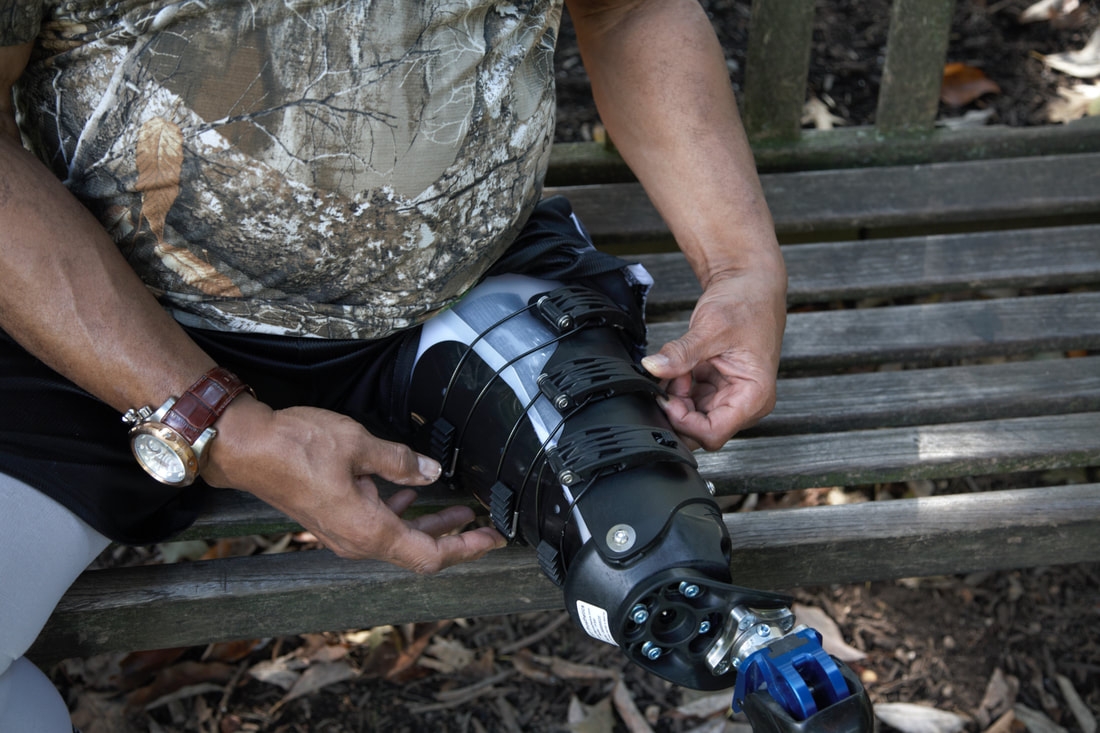Prosthetic leg sockets play a crucial role in the lives of individuals who have undergone lower limb amputations. These sockets serve as the interface between the residual limb and the prosthetic device, providing support, stability, and comfort. In this article, we will explore the world of prosthetic leg sockets, focusing on different types, considerations for below-knee amputees, the integration of prosthetic running legs, and the impact of BAT knees on socket design.
Introduction
Amputation is a life-altering event, and prosthetic leg sockets play a vital role in restoring mobility and independence for amputees. These sockets are custom-made to fit the unique contours of the residual limb, ensuring a comfortable and secure connection with the prosthetic device. A well-fitted socket not only enhances the overall functionality but also contributes to the wearer's quality of life.
Understanding Prosthetic Leg Sockets
Prosthetic leg sockets come in various designs and materials, each catering to specific needs and amputation levels. The choice of socket depends on factors such as the shape of the residual limb, activity level, and personal preferences. It is essential to work closely with a prosthetist to determine the most suitable socket type for an individual.
Factors such as socket alignment, suspension, and liner material significantly impact the comfort and performance of the prosthesis. Proper alignment ensures proper gait mechanics, reducing strain on the residual limb and minimizing the risk of secondary health issues. Suspension mechanisms like suction, locking pin systems, or elevated vacuum systems ensure a secure connection between the socket and the residual limb, allowing for more natural movement.
Prosthetic Leg Sockets for Below-Knee Amputees
Below-knee amputees face unique challenges when it comes to socket design. The shape and size of the residual limb play a crucial role in achieving a secure fit and maintaining proper alignment. Special attention is given to the patellar tendon-bearing areas, which provide weight distribution and stability during walking or running.
The use of silicone liners in below knee prosthetic leg sockets enhances comfort and reduces pressure points, promoting better circulation. A well-designed socket allows for proper limb movement and contributes to improved balance and control.
Prosthetic Running Legs and Sockets
For amputees who lead an active lifestyle, specialized prosthetic running legs and sockets are available. These running-specific prosthetic systems are designed to absorb impact, provide energy return, and enhance performance. The socket's design and materials are tailored to the unique demands of running, ensuring optimal comfort, stability, and propulsion.
Prosthetic running legs often incorporate carbon fiber blades or springs that mimic the natural movement of the lower limb. These components, combined with a well-fitted socket, enable amputee athletes to participate in various sports and activities with confidence. The socket's design for running legs focuses on maximizing energy transfer, reducing friction, and minimizing discomfort during high-impact movements.
It is crucial for individuals with prosthetic running legs to work closely with their prosthetist to ensure the socket fit is optimized for their specific needs. Customization of the socket may involve adjustments to alignment, padding, or suspension mechanisms to achieve the perfect balance between comfort and performance.
BAT Knees Prosthetic Leg Sockets
Biomechanical Ankle-Total (BAT) knees have revolutionized the field of prosthetic technology by providing enhanced stability and a more natural walking experience. These knees incorporate microprocessors and sensors that adapt to the user's gait, allowing for smoother transitions and improved control.
Prosthetic leg sockets play a vital role in the integration of BAT knees. The socket design must accommodate the unique mechanics of these knees, ensuring proper alignment and alignment for optimal functionality. The combination of a well-fitted socket and BAT knees allows amputees to navigate various terrains with ease and confidence, mirroring the natural movements of the human leg.
Ensuring Comfort and Functionality
Achieving a comfortable and functional prosthetic leg socket involves a collaborative process between the prosthetist and the individual. Custom-made sockets are tailored to the individual's specific limb shape, taking into account any bony prominences or sensitive areas. The fitting process involves meticulous measurements and adjustments to ensure a secure and comfortable fit.
Proper hygiene and regular care of the prosthetic leg socket are essential for long-term comfort and functionality. Cleaning the socket and liner regularly, inspecting for wear and tear, and replacing components as needed are crucial maintenance practices.
Conclusion
Prosthetic leg sockets are the vital link between amputees and their prosthetic devices. These custom-made interfaces provide stability, comfort, and functionality, allowing individuals to regain mobility and independence. Whether it's for everyday activities, running, or advanced knee technology, the right prosthetic leg socket can make a significant difference in an amputee's life.
At IFIT Prosthetics, we understand the importance of well-fitted prosthetic leg sockets and strive to provide personalized solutions that meet the unique needs of our clients. Our experienced team of prosthetists works closely with individuals to ensure a comfortable and precise fit, allowing them to embrace an active and fulfilling lifestyle.
FAQs
1. How often should I replace my prosthetic leg socket?
It depends on various factors, including your activity level, changes in your residual limb, and wear and tear. It is recommended to consult with your prosthetist regularly to evaluate the condition of your socket and determine if a replacement is necessary.
2. Can I wear my prosthetic leg socket while swimming or showering?
It depends on the specific design and materials of your socket. Some sockets are waterproof and can be worn during water activities, while others may require a protective cover. Consult with your prosthetist to understand the capabilities of your socket and any precautions to take.
3. How long does the fitting process for a prosthetic leg socket take?
The fitting process varies depending on individual needs and complexity. It may involve several appointments, including measurements, socket adjustments, and alignment evaluations. Patience and collaboration with your prosthetist are essential for achieving the best possible fit.


